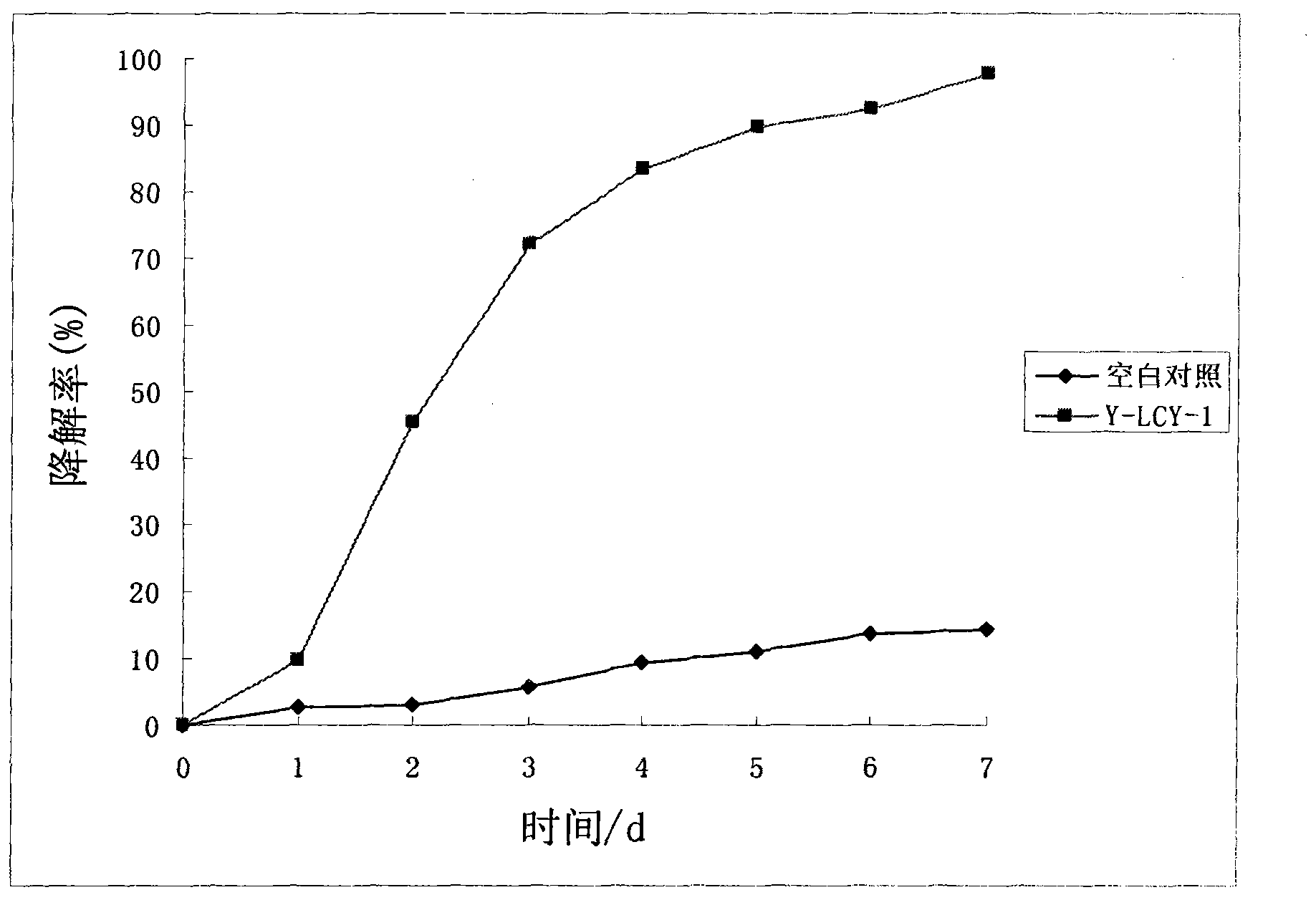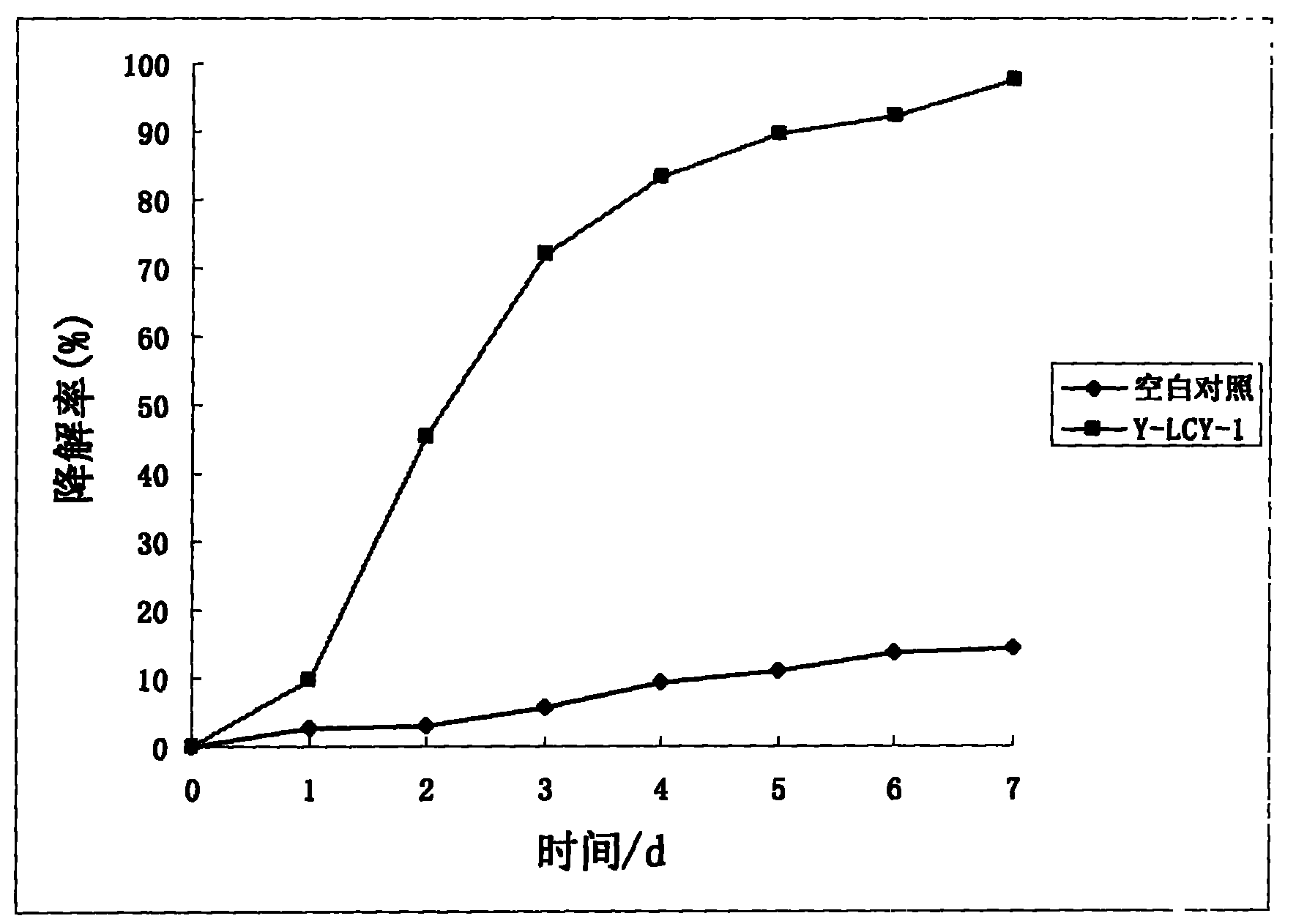Rhodotorula mucilaginose strain and application thereof in degradation of butachlor
A technology of yeast and glue red, applied in the field of bioremediation, can solve problems such as high toxicity, groundwater and river pollution, and impact on human health, and achieve rich and diverse effects
- Summary
- Abstract
- Description
- Claims
- Application Information
AI Technical Summary
Problems solved by technology
Method used
Image
Examples
example 1
[0014] Example 1. Isolation, purification and identification of Rhodotorula mucilaginose Y-LCY-1 CGMCCNo.3270
[0015] Rhodotorula mucilaginose (Rhodotorula mucilaginose) Y-LCY-1 CGMCCNo.3270 provided by the present invention is isolated and screened from paddy field soil where butachlor has been applied for a long time in the suburbs of Harbin, and its specific isolation and purification process is as follows:
[0016] Take 10g of soil sample and place it in 50mL of butachlor with a concentration of 100mg·L -1 In the basic inorganic salt culture medium, cultivate on a constant temperature shaker at 28°C and 160rpm, then insert 10% of the inoculum into the fresh butachlor inorganic salt culture medium every other week, and gradually increase the dosage of butachlor until the culture The concentration of butachlor in the liquid reaches 1000mg·L -1 , so acclimated for about three months. Then separate on the butachlor-based inorganic salt agar plate by dilution coating method,...
example 2
[0035]Preparation of Example 2 Glue Rhodotorula mucilaginose (Rhodotorula mucilaginose) Y-LCY-1 CGMCCNo.3270 microbial agent
[0036] The specific production process of the bacterial agent is as follows:
[0037] Inoculate the strains preserved in the slant culture medium with 100 mg·L -1 Activated in the inorganic salt medium of butachlor for 12h, then the bacterial solution (OD 600 =1.0) transfer in the conical flask that the YEPD liquid medium of 150mL is housed by the inoculum size of 10% (V / V), the initial concentration of butachlor in the medium is 50mg L -1 , sealed with a parafilm, placed in a constant temperature shaking incubator at 28°C and cultured at a frequency of 160rpm for 3 days, then took out 1 / 4 of the culture solution, and then added the same amount of culture solution to make the initial concentration of butachlor in the medium reach 50mg·L -1 , and continue to cultivate in the incubator for 3 days, which is the bacterial agent. The obtained liquid bac...
example 3
[0039] Example 3 Biodegradation of butachlor by Rhodotorula mucilaginose Y-LCY-1 CGMCCNo.3270
[0040] (1) Rhodotorula mucilaginose Y-LCY-1 CGMCCNo.3270 to 100mg L -1 Determination of Butachlor Degradability
[0041] Bacterial suspension preparation: pick a ring of Y-LCY-1 slant-preserved strains under sterile conditions, transfer them to McFarland’s medium, place them in a 28°C, 160rpm constant temperature shaker, and cultivate them to the optimum bacterial age. A certain amount of culture solution was centrifuged at 4000rpm for 10min, the supernatant was discarded, and 0.2mol·L -1 Wash with phosphate buffer (pH=7) to remove the nutrients carried by the bacteria (3 times in total), collect the bacteria, adjust the concentration of the bacteria with buffer, and measure the absorbance value OD at 600 nm with a spectrophotometer 600nm , so that OD 600nm Around 2.0.
[0042] According to the inoculation amount of 5%, the above bacterial suspension was inoculated in the basic ...
PUM
 Login to View More
Login to View More Abstract
Description
Claims
Application Information
 Login to View More
Login to View More - R&D
- Intellectual Property
- Life Sciences
- Materials
- Tech Scout
- Unparalleled Data Quality
- Higher Quality Content
- 60% Fewer Hallucinations
Browse by: Latest US Patents, China's latest patents, Technical Efficacy Thesaurus, Application Domain, Technology Topic, Popular Technical Reports.
© 2025 PatSnap. All rights reserved.Legal|Privacy policy|Modern Slavery Act Transparency Statement|Sitemap|About US| Contact US: help@patsnap.com



